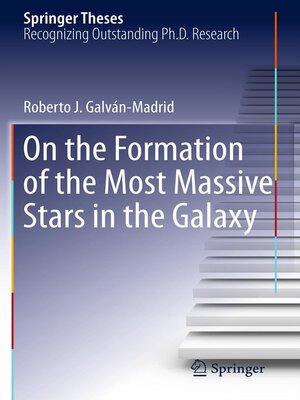On the Formation of the Most Massive Stars in the Galaxy
ebook ∣ Springer Theses
By Roberto J. Galván-Madrid

Sign up to save your library
With an OverDrive account, you can save your favorite libraries for at-a-glance information about availability. Find out more about OverDrive accounts.
Find this title in Libby, the library reading app by OverDrive.



Search for a digital library with this title
Title found at these libraries:
| Library Name | Distance |
|---|---|
| Loading... |
The most massive stars in the galaxy - those with more than 15 to 20 solar masses - are lilkely to ionize their surroundings before they reach their final mass. How can they accrete in spite of the presence of over-pressurized gas?
This thesis presents results of Submillimeter Array (SMA) and Very Large Array (VLA) studies of massive star formation regions in the early stages of ionization, as well as an analysis of numerical simulations of the evolution of these young HII regions. The results favor a picture in which very massive stars form in accretion flows that are partially ionized and that keep accreting material from their environment.
This thesis presents results of Submillimeter Array (SMA) and Very Large Array (VLA) studies of massive star formation regions in the early stages of ionization, as well as an analysis of numerical simulations of the evolution of these young HII regions. The results favor a picture in which very massive stars form in accretion flows that are partially ionized and that keep accreting material from their environment.







